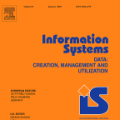In recent years, the geospatial industry has been developing at a steady pace. This growth implies the addition of satellite constellations that produce a copious supply of satellite imagery and other Remote Sensing data on a daily basis. Sometimes, this information, even if in some cases we are referring to publicly available data, it sits unaccounted for due to the sheer size of it. Processing such large amounts of data with the help of human labour or by using traditional automation methods is not always a viable solution from the standpoint of both time and other resources. Within the present work, we propose an approach for creating a multi-modal and spatio-temporal dataset comprised of publicly available Remote Sensing data and testing for feasibility using state of the art Machine Learning (ML) techniques. Precisely, the usage of Convolutional Neural Networks (CNN) models that are capable of separating different classes of vegetation that are present in the proposed dataset. Popularity and success of similar methods in the context of Geographical Information Systems (GIS) and Computer Vision (CV) more generally indicate that methods alike should be taken in consideration and further analysed and developed.
翻译:近些年来,地理空间工业一直在稳步发展,这一增长意味着卫星星座的增加,这些星座每天提供大量卫星图像和其他遥感数据。有时,这种信息,即使在某些情况中我们指的是公开提供的数据,也由于空间空间工业的大小而下落不明。在人类劳动的帮助下或通过使用传统的自动化方法处理如此大量的数据,从时间和其他资源的角度来说,并非总是一个可行的解决办法。在目前的工作中,我们建议采用一种办法,建立一个多式和时空数据集,由公开提供的遥感数据组成,并利用先进的机器学习技术进行可行性测试。确切地说,利用革命神经网络(CNN)模型,能够将拟议数据集中存在的不同种类的植被区分开来。在地理信息系统和计算机视野方面,类似方法的普及和成功通常表明,在考虑和进一步分析和开发时尚应采用同样的方法。



